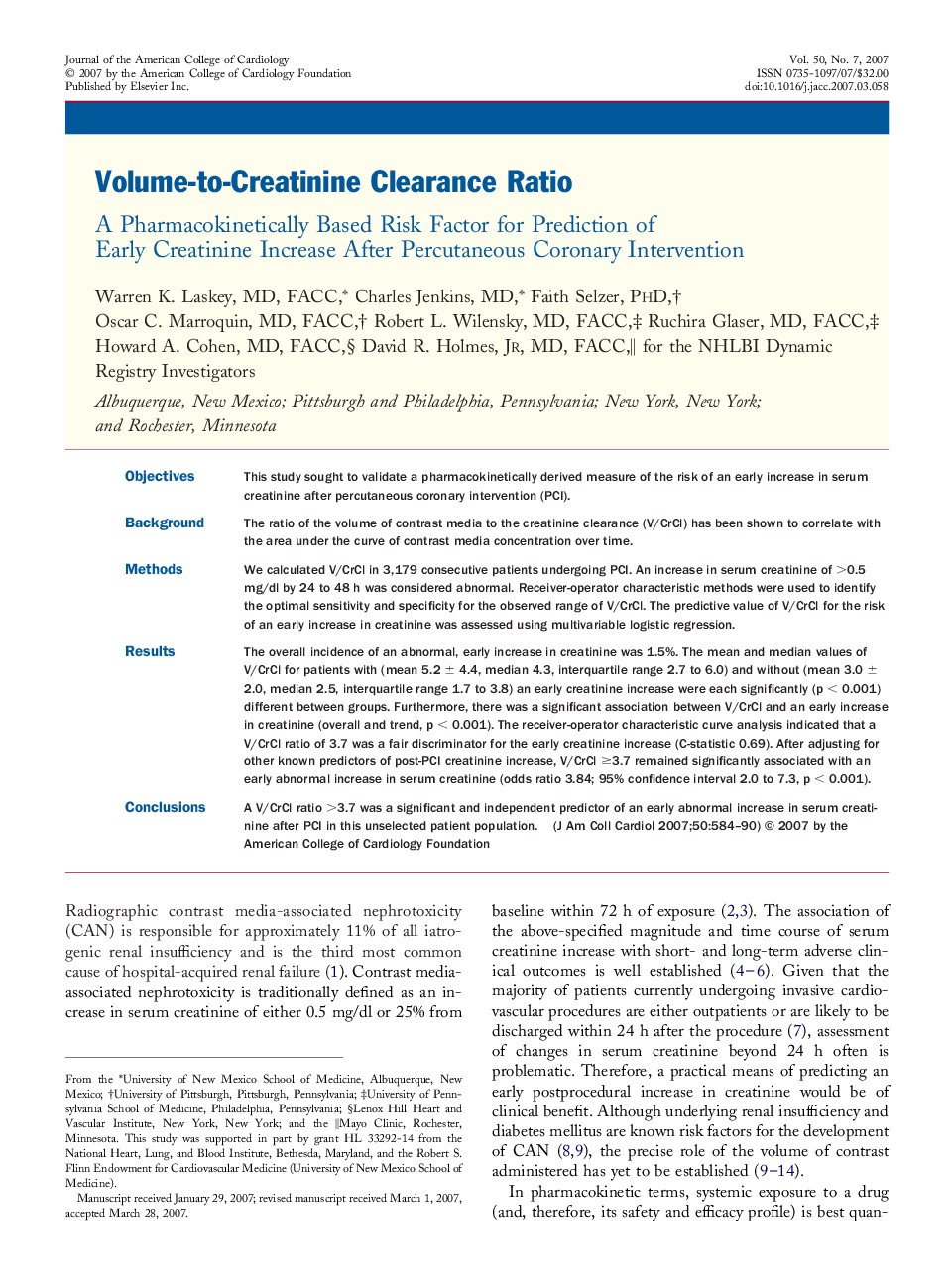| Article ID | Journal | Published Year | Pages | File Type |
|---|---|---|---|---|
| 2954611 | Journal of the American College of Cardiology | 2007 | 7 Pages |
ObjectivesThis study sought to validate a pharmacokinetically derived measure of the risk of an early increase in serum creatinine after percutaneous coronary intervention (PCI).BackgroundThe ratio of the volume of contrast media to the creatinine clearance (V/CrCl) has been shown to correlate with the area under the curve of contrast media concentration over time.MethodsWe calculated V/CrCl in 3,179 consecutive patients undergoing PCI. An increase in serum creatinine of >0.5 mg/dl by 24 to 48 h was considered abnormal. Receiver-operator characteristic methods were used to identify the optimal sensitivity and specificity for the observed range of V/CrCl. The predictive value of V/CrCl for the risk of an early increase in creatinine was assessed using multivariable logistic regression.ResultsThe overall incidence of an abnormal, early increase in creatinine was 1.5%. The mean and median values of V/CrCl for patients with (mean 5.2 ± 4.4, median 4.3, interquartile range 2.7 to 6.0) and without (mean 3.0 ± 2.0, median 2.5, interquartile range 1.7 to 3.8) an early creatinine increase were each significantly (p < 0.001) different between groups. Furthermore, there was a significant association between V/CrCl and an early increase in creatinine (overall and trend, p < 0.001). The receiver-operator characteristic curve analysis indicated that a V/CrCl ratio of 3.7 was a fair discriminator for the early creatinine increase (C-statistic 0.69). After adjusting for other known predictors of post-PCI creatinine increase, V/CrCl ≥3.7 remained significantly associated with an early abnormal increase in serum creatinine (odds ratio 3.84; 95% confidence interval 2.0 to 7.3, p < 0.001).ConclusionsA V/CrCl ratio >3.7 was a significant and independent predictor of an early abnormal increase in serum creatinine after PCI in this unselected patient population.
